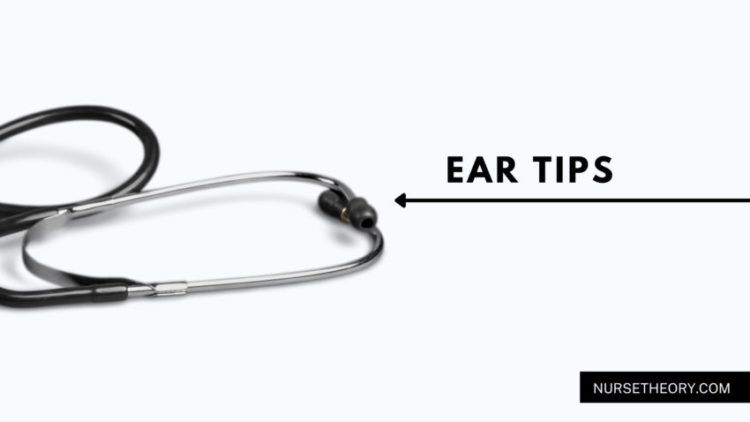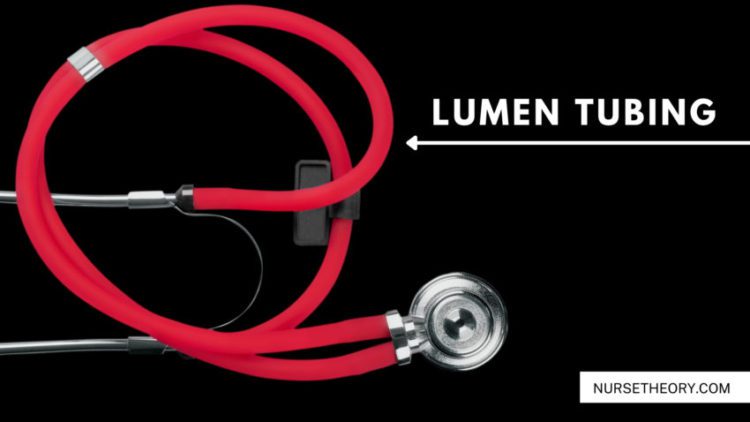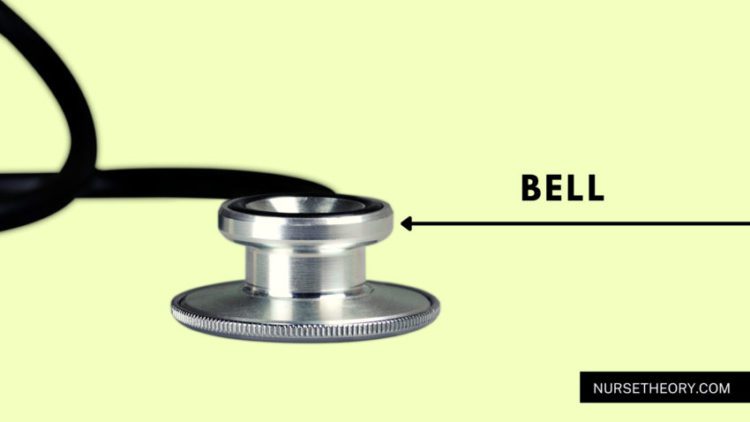
Understanding the parts of a stethoscope, including their names and functions, helps you manage the device effectively.
Stethoscopes are essential in allowing healthcare providers to care for their patients properly.
They allow medical professionals to observe heart, lung, and bodily sounds to detect potential health problems.
As a result, learning a stethoscope’s functionality provides insights into how and why it works.
This article explains the various parts of a stethoscope to educate you on its functionality.
The Parts of a Stethoscope Include:
- Headset
- Ear tips
- Ear tubes
- Tubing
- Stem
- Chestpiece
- Diaphram
- Bell
When properly combined, these parts create a functioning stethoscope.
It allows healthcare specialists to listen to high-frequency sounds to determine and treat potential medical issues.
Headset

The headset is the upper half of the stethoscope, including lumen tubing, ear tubes, tension springs, and ear tips.
These components form a comfortable alignment in users’ ears to provide sound transfer and quality.
Therefore, the headset’s construction ensures nurses, doctors, and other healthcare providers obtain the best performance possible.
The headset’s ear tips can be pointed toward the user’s nose, while the ear tubes hang back slightly when viewed from the side.
It allows sound to flow efficiently into the ears to minimize disturbance from the stethoscope.
It also improves comfort and adequately aligns the ear tips with the ear canal for optimal sound quality.
These components provide comfort, support, acoustic features, and sound transfer.
Finally, the headset comprises metal materials to ensure the best sound quality.
However, the lumen tubing comprises plastics, PVC, and rubber materials for durability, flexibility, and sound transfer.
Ear Tips

The ear tips provide a comfortable seal inside the user’s ear.
It allows sounds to reach the air channel effectively and efficiently.
It also helps block out external noise to ensure minimum distances when listening to patients’ heart, lung, and bodily sounds.
Without high-quality ear tips, the sounds a stethoscope captures would leak out, and external noises would interfere with the listening experience.
The ear tips comprise rubber or silicone material to create a form-fitting seal inside the ears.
They fit comfortably inside the ear canal so users can take vital readings regularly without discomfort.
Therefore, comfortable ear tips are essential for users who spend a lot of time checking patients’ health.
Fundamentally, it makes a massive difference between a comfortable experience and an irritating or painful one.
Finally, all modern ear tips comprise soft, flexible materials that fit inside and cradle the inner ears.
The design includes a hole in the center so sounds quickly transfer through the binaural to the ear tips.
Furthermore, the ear tips feature a rigged or smooth interior where the ear tubes meet the ear tips.
It ensures that the ear tips stay snug and secured to the ear tubes.
Ear tips are one of the most valuable items a person can replace on a stethoscope to improve their experience.
It’s because ear tips are small and inexpensive.
Furthermore, high-quality ear tips can slightly improve sound quality by minimizing external noises and improving sound transfer.
Nevertheless, a chestpiece primarily impacts its overall sound quality.
Ear Tubes

The ear tubes are the stethoscope’s metal/steel components that connect the lumen tubing and the ear tips.
The ear tubes isolate and transfer sound from the chestpiece to the user’s ears.
High-quality ear tubes ensure minimal sound quality loss by utilizing premium components and an efficient acoustic design.
They provide comfort by creating a proper angle for the ear canals.
The ear tubes utilize left and channels to provide exceptional sound quality.
It provides a better sound experience for each ear and lets users quickly diagnose their patient’s medical condition.
Moreover, the ear tubes can be combined with a single or dual-lumen tubing design to reduce noise interference and rubbing.
Tubing

The stethoscope lumen tubing is the soft, flexible rubber/PVC material that connects the chestpiece to the headset.
The tubing transfers sound captured by the diaphragm/bell to ear tubes with minimal sound quality loss.
Tubing comprises a single or dual-lumen to provide better sound transfer between the headset and the cheekpiece.
However, the tubing design depends on the manufacturer, stethoscope design, and chestpiece/headset.
Stethoscopes featuring a single-lumen design (as seen in the photo below) have a single tube that connects to the chestpiece.
The single tubing diverges into two, connecting to the ear tubes/headset.
Alternatively, a dual-lumen design (as seen in the above image) connects two tubes from the chestpiece to the headset.
It helps section sounds into the left and right headset hemispheres for improved acoustic sensitivity.
However, many high-quality stethoscopes use either design to accommodate users’ needs.
Stem

The stem is the part that connects the stethoscope’s tubing to the chestpiece.
The stethoscope’s stem comprises metal/steel materials and ensures a secure link for optimal performance.
It also allows the user to switch/click between the chestpieces diaphragm and bell.
It’s achieved by rotating the chestpiece (dual-sided chestpiece models) and clicking it into place via the ball bearing.
Finally, the stem allows the user to disconnect the chestpiece so that you can repair or interchange it.
It’s essential for replacing damaged components or for healthcare providers who need to connect an alternative attachment for assessing their patient’s condition.
Chestpiece

The stethoscope’s chestpiece or head is the entire device’s central part.
The chestpiece is an essential part of a stethoscope’s acoustic performance.
It is responsible for detecting, capturing, and transferring sounds from the body to the headset.
Overall, the chestpiece comprises the diagram, bell, and stem connection that attaches the chestpiece to the lumen tubing.
A stethoscope chestpiece features a single-head, dual-head, or triple-head design to provide high/low-frequency capture and control sound.
Naturally, the chestpiece design varies depending on the stethoscope.
However, each design offers unique benefits that allow healthier providers to capture sound and modify their listening experience.
For example, single-head stethoscopes feature a variable diaphragm that’s adjustable via a pressure change.
It allows nurses and doctors to listen to high or low frequencies by adding or releasing pressure to the diaphragm.
Alternatively, dual-head stethoscopes feature a two-headed design with a bell and diaphragm.
The bell or pediatric side allows medical professionals to easily listen to specific heart sounds and the sounds of infants and young children.
Conversely, the diaphragm performs better with higher-frequency sounds of adults or detecting specific conditions.
Functionality
The chestpiece listens to patient sounds by placing the diaphragm or bell on the patient’s chest, back or stomach. It allows the device to hone into specific sounds to detect heart rate, lung sounds, arterial conditions, and other human noises.
As previously mentioned, you can adjust the acoustic frequency by applying pressure to the chestpiece.
As a result, healthcare specialists can better and more accurately determine the seriousness of particular sounds.
Most chestpieces work best when applied directly against the patient’s skin properly.
However, there are more robust, high-quality stethoscopes that can pick up sounds through layers of clothing.
For example, high-end electronic stethoscopes amply sound enables medical professionals to detect even the faintest noises.
It’s essential for those working in cardiology and emergency care professions.
Diaphragm

The diaphragm is the large circular end of the chestpiece.
This side of the chestpiece allows medical professionals to listen to a broader area of the patient’s body.
It also picks up adult sounds better than the bell half of the chestpiece.
As a result, nurses, doctors, and healthcare specialists commonly use this part to monitor the bodily sounds of adults.
Some diaphragms feature a non-chill to ensure maximum comfort for the patient.
It allows the device to directly contact the skin without discomfort or a cold reaction.
The non-chill rim also comprises protective materials to minimize allergic reactions among those with sensitive skin.
Bell

The bell or pediatric side is the smaller circular end of the chestpiece.
Primarily, this area focuses on a narrower range and is essential for listening to the vitals of infant and pediatric patients.
It’s because the bell provides a better center for observing, monitoring, and detecting the sounds of small bodies.
Furthermore, the bell may feature a non-chill and hypoallergenic design to provide comfort during listening sessions.
Summary
Stethoscopes contain multiple parts that allow them to detect and transfer sounds from the patient’s body to the user’s ears.
Consequently, this allows medical professionals to detect, diagnose and treat various medical conditions.
Therefore, stethoscopes are a vital part of healthcare and patient well-being.
The various parts of a stethoscope include ear tips, ear tubes, lumen tubing, headset, stem, chestpiece, diaphragm, and bell.
These components transfer sounds from the diaphragm/bell to the headset for observation.
Medical professionals place the chestpiece against the patient’s chest, back, or stomach to capture sounds.
Next, the sound is transferred from the chestpiece to the tubing and into the ear tubes, allowing users to hear various bodily sounds.
It includes heart rate, lung sounds, murmurs, bruits, aortic stenosis, and other internal sounds.
It allows medical professionals to determine a patient’s overall health and monitor potential health issues.
Furthermore, healthcare providers use these assessments post-surgery/operation to monitor recovery and ensure no vital complications.